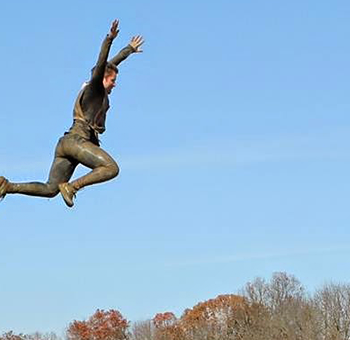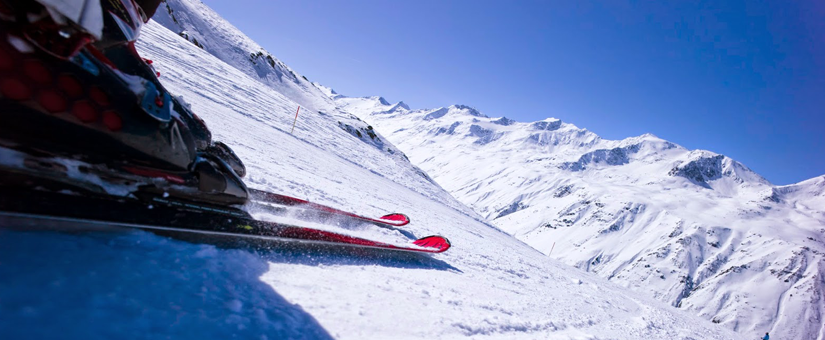
Even Accomplished Ski Racers Need To Start at the Beginning
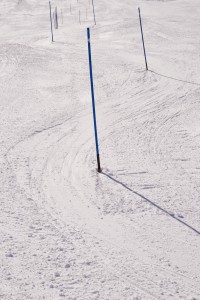 As the snow finally begins to fall in the Mountains, all ski racers start to feel that drive to get up on the slopes and get going. The problem is that many racers don’t give much thought about how their first few training sessions should go, they just want to go ski. They feel that deep motivation and boiling ferocity to attack the hill right now and go fast.
As the snow finally begins to fall in the Mountains, all ski racers start to feel that drive to get up on the slopes and get going. The problem is that many racers don’t give much thought about how their first few training sessions should go, they just want to go ski. They feel that deep motivation and boiling ferocity to attack the hill right now and go fast.
Of course we all feel the same way. But for racers, more thought and planning have to go into those first few sessions on the snow to make sure your technical foundations are in order, both mentally and physically. Specifically, racers should be incorporating imagery into their training 3-5 days per week.
One thing I have learned as a long-time performance consultant and coach is that there are clear distinctions between what it takes to be good, what it takes to be great, and what it takes to be the best. When aiming for the top as a ski racer, the path requires an engaged and searching mind. For a skier’s performances to thrive during the ski season they need to ski fast by taking risks, ski a little loose, and totally go for it. To best prepare for that time when you can attack the hill with improvisation and pure speed, it’s to use the early portion of the season to remind yourself of how little nuances can affect your performance. If your technique lacks precision now then you will be practicing bad habits later and won’t be as likely to ski your best when you need it most.
So how can you most effectively utilize those first few sessions on the snow? By focusing on the technique points you will need to hone for your events and getting back to regular imagery practice of those skills. I’m only suggesting that racers spend 5-10 minutes each day going back to the beginning, core skills if you will, and doing mental reps of those technical things that need to be automatic. And that’s where imagery comes in.
Dr. Maxwell Maltz, a pioneer in the field of sport psychology and performance enhancement, once made the astute observation that your brain is incapable of distinguishing the difference between something that actually happened and something that was vividly imagined. Since most ski racers can’t run gates every day, it’s imperative to create quality mental reps in early season training to prepare yourself correctly for those actual runs on the snow. Remember that while the goal is for racers to ski fast, one needs to be able to precisely perform basic skills over and over. Ideally later in the year you need to just react and be on autopilot to ski your best. Thus, well thought out imagery sessions now are your ticket to success. But your imagery must include feel, not just the emotion of ‘ski fast’.
To get off to a great start, I suggest that you focus your imagery work on some basic techniques I know you can do in your sleep. Our goal is to build a repeatable performance skill set that you can confidently trust in all conditions. Ideally this skill set can be performed mentally and physically both on and off the hill. Like your first few days on the hill when you are shaking off the rust, we start simple and shake off our mental imagery rust too.
“Visualization is one of the most powerful mental training strategies available to performing athletes.”
~Dr. James Loehr
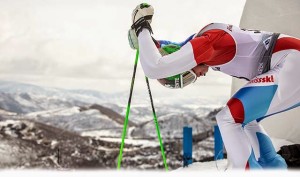
Failing to train with an awareness to little details will inevitably mean precious wasted days on the hill. Failing to visualize with an awareness to little details will likewise slow your rate of improvement. nDeveloping your racing skills requires you to take charge of your mental, physical, technical and tactical states. Be precise during your imagery work and skiing.
Let’s approach both on the snow and our imagery work in the same way by strongly tying the two together. Think about how as a young skier you were intrigued by the mundane. Simply learning how to ski for a few yards on one ski, for example. How proud of that did you feel? I bet right now you can sit back, take a deep relaxing breath, close your eyes and quickly imagine yourself skiing for 10 yards on one ski, right? Think of how it feels to have your weight distributed on one ski. Think of how it feels to press your shin into the front of your boot. Think of how you need to keep your hands in front of you so your weight stays forward. Try closing your eyes again and imaging skiing briefly on one ski but include those feelings.
Ski racers should always be learning, and at this point in the season we have to re-learn how to correctly focus ourselves for our imagery work. For example, every training run is an opportunity to refine technique, learn to take better lines, or adjust your turn initiation. Every imagery session should have that same goal of refining and tuning your confidence and technique. So I always suggest we start our imagery work with on the snow skills that you can perform well at a high level.
Let’s examine the function of the turn, since this should be a pretty well practiced skill. In racing, the turn is used to achieve a specific change of direction in order to maintain a tactical line with a minimal loss of speed. A racer’s goal is to arc clean and sharp turns every time. We don’t want to stray too far from the fall line, or ski ‘dirty’ across the hill because to ski fast we need to attack the fall line and drive downhill as much as possible, not sluff speed.
We hear this from our coaches all the time so I’m sure this is not new information. But let’s take this a step further. Through massive amounts of repetition, racers use a combination of skills, specifically edging, rotary motion and pressure on skis. However, how you as a skier combine and uses these skills and when you combine and uses the skills are significantly different for each of us for each run. These are the kinds of details I am asking you to be aware of in both your mental training as well. The goal is to be able to image these skills with accuracy and precision. Most importantly is to incorporate feel into your imagery work so as to make it as real as possible.
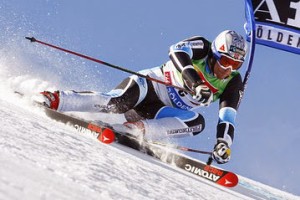
Each of the variables above are critical to the effective racing turn. On the snow and in your mind it’s key to explore all of the tiny nuances of each component in order to master them. The skier who is happy being average just jumbles these all together with not much thought. The racer with a hunger to improve looks at their early season as a golden opportunity to do more than just finish running gates and get to the bottom of the training course.
It is always best as you get back to your imagery work to focus on accuracy and simplicity. I encourage you to see all of these scenes as if you are looking out from your own eyes (first person). First Person imagery is the best way to incorporate feeling as well. The keys to effective ski racing imagery work are to incorporate sight, feel, sound, and smell. It’s also best to be a bit relaxed and in a place where you won’t get disturbed for a few minutes. Let’s give it a try.
Focus yourself through controlled breathing before starting your imagery work. Here’s how;
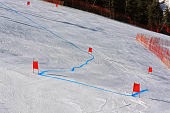 Take five consecutive deep belly breaths inhaling through your nose, exhaling through your mouth. The goal is to inhale for 6 seconds, pause for two, exhale for 7 seconds. hus one full breath is 15 seconds long. As you exhale, drop your shoulders down away from your ears to relax your upper body.
Take five consecutive deep belly breaths inhaling through your nose, exhaling through your mouth. The goal is to inhale for 6 seconds, pause for two, exhale for 7 seconds. hus one full breath is 15 seconds long. As you exhale, drop your shoulders down away from your ears to relax your upper body.
Breathing likes this feels good because it grounds and centers us to the moment. Now let’s add some basic imagery to this breathing exercise.
Imagery Exercise #1.
Take a relaxing breath again, close your eyes, and see yourself on a groomed blue run. See and feel yourself driving your hands forward, pressing your shins into the front of your boots, rolling your ankles to the left as you set an edge and initiate an arcing left turn. I want you to really notice your connection to the snow. Think about how it feels as you really stomp down on that downhill ski and feel the energy from the camber of your ski working to spring you forward through the turn. See how easy that was? Great job!
To the ski racer immersed in the process of becoming better, the awareness of the tiniest of details all matter because even just the slightest increase in pressure on the outside ski at the right time can help to accelerate you through the turn and shave a couple hundredths off your time. By learning how to image this same arcing turn where you feel the vibration of the snow and the pressure of your boot we can build in the confidence we need to help us achieve more effective work on the snow.
If we give in to our early season adrenaline filled desire to ‘just ski’, then we miss a key chance to improve through a better understanding of some very controllable skill variables. As a racer you can’t control the outcome of the race, nor can you control the conditions. You DO control how you move your body down the hill in relation to the snow. To make the most of the first few days running gates pay more attention to these small points in your imagery work too.
All I ask is for you to take just 5-10 minutes each day for quality imagery work with just a few controlled scenes. Imagine how much your confidence would grow and how effective you would then be on the snow. You learn to better connect to the technical components of racing through a combination of on snow work and regular imagery sessions. In taking this approach you are now taking accountability for your improvement. That’s the mark of a successful racer!
Imagery Exercise #2.
Here’s another quick imagery exercise to do. Read it through first so you know what you will be imaging. Ready? Take a couple of deep belly breaths and relax your shoulders. See yourself on a comfortable groomed slope. See yourself skiing down lifting your uphill/inside foot up off the snow as you turn. See yourself finishing the turn with power and confidence. As you finish the turn, put the airborne ski back on the snow to set your edges for a few yards across the fall line. Feel the transfer of your weight as needed to get back to attacking the fall line on two skis. Easy again, right?
Even though we can’t always train on the snow, you can still choose to create vivid imagery sessions of your core technical skills which as we know from Dr. Maltz are treated the same by our brain as actually skiing. And once we understand that, we can then begin to practice quality imagery work in earnest. This then helps us make the most of the first couple times out on the mountain.
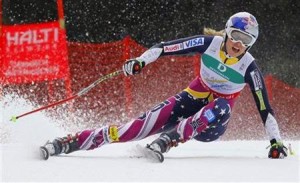
“I always visualize the run before I do it. By the time I get to the starting gate, I’ve run that race 100 times already in my head, picturing how I’ll take the turns.”
~ Lindsey Vonn
Derrek Falor. M.Ed.
[email protected]
www.thrivesp.com
@derrekfalor
Derrek is the owner of Thrive: Excellence in Sport Performance, is a life-long skier, provides mental training programs to Ski Teams and Ski Racers in the Pacific Northwest, has coached college soccer for the past 20 years, has a USSF A License, is a member of the Association for Applied Sport Psychology, is undergoing professional certification through AASP, and has a Master’s Degree in Sport Psychology.
- sport in a pandemic: Crisis or opportunity?Chapter 4 - December 4, 2020
- Crafting the Perfect 10: - November 6, 2020
- Sport in a Pandemic:CRISIS OR OPPORTUNITY?Chapter 3 - September 23, 2020

